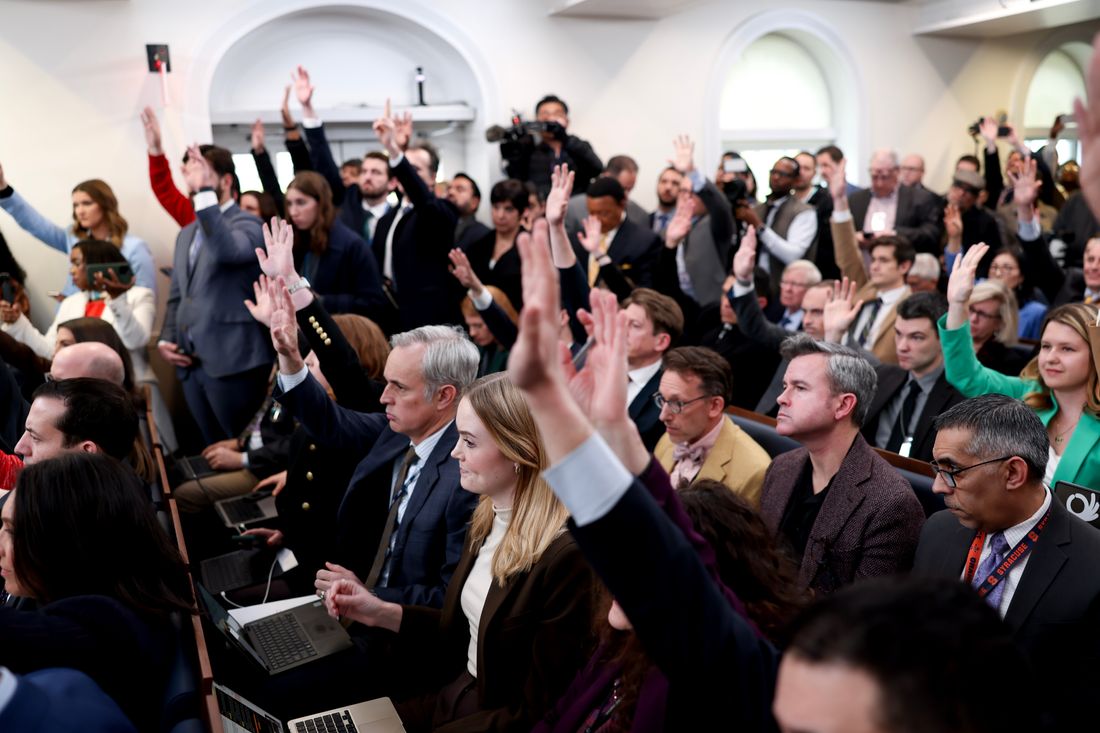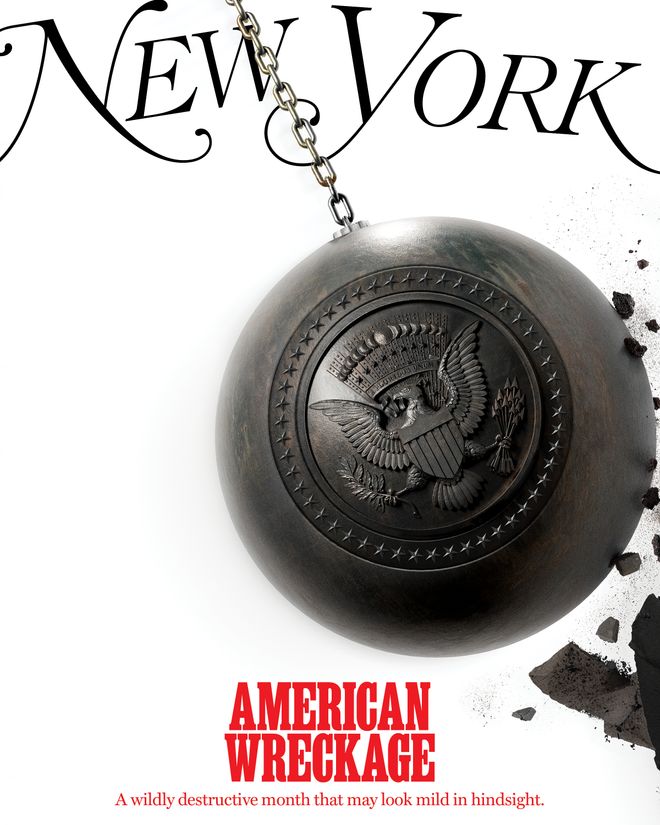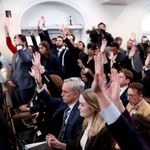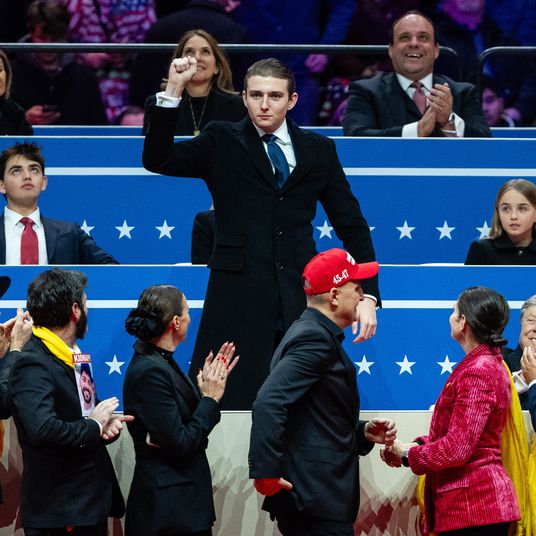
Jim McCarthy is a 57-year-old public-relations boss known for being unusually combative with the press. As the head of the boutique firm CounterPoint Strategies, which has offices in New York and Washington, D.C., he is a spokesperson for big seafood (he helped “the shrimp industry to go hard at the AP just a few weeks ago”) and big vape (“my poor little vaping guys,” as he describes the industry to me, referring to its alleged persecution by the FDA). He speaks in a mannered drawl in keeping with his role as the flack who represented Augusta National Golf Club in its fight to refuse female members, and he has long seen negative media coverage of his clients as part of a conspiracy among the government, activist groups, and journalists. “The collusion and the coziness is as strong as can be,” he says. “And, of course, they all share the same ideological outlook.”
McCarthy is now part of an army of consultants, lawyers, and think-tank apparatchiks swarming over Donald Trump’s Washington to both advance their respective interests and give the administration a helping hand. For McCarthy, Trump’s apparent willingness to weaponize vast troves of government data is a watershed moment. “One of my colleagues likened it to the end of the Soviet Union, when academics had access to the KGB files,” he says. “We want to get in there and dive through it and zero in on the important stuff before that window closes.”
In This Issue: The Purge
The Trump administration’s war against the media has so far involved bullying the Associated Press for refusing to call the Gulf of Mexico the Gulf of America, claiming that outlets such as Politico have received payoffs from the government in the form of subscriptions, and threatening to use the FCC to punish broadcasters like PBS for their supposed bias. McCarthy’s small role in this war represents a different front: establishing that the media has been doing the bidding of the “deep state.”
McCarthy’s firm is drawing up road maps to help members of the administration identify correspondence between journalists and agency officials over the past four years in an effort to expose what he anticipates to have been “unholy collusion.” He says, “There’s an opportunity to try to uncover just what’s been going on behind closed doors at these agencies. Maybe it’ll turn out everyone had a clean haircut and was reading the Gospels, but I doubt it.” Drawing on his expertise with Freedom of Information Act requests and his familiarity with the ways reporters source stories, he is helping allies of the administration sift through mountains of data by targeting specific reporters and submitting key dates around policy shifts and press coverage that will supposedly show coordination between government agencies and the national media.
In some cases, he is providing this information to conservative and libertarian think tanks and policy shops; in others, he is giving it to personnel who worked in and around the Trump campaign. “In a sense, it’s a crowdsourced effort because all sorts of different watchdogs are zeroing in on various areas where they have particular expertise and then channeling that guidance to the incoming teams across the whole federal bureaucracy,” McCarthy says. “For us, that’s knowing the outlets and journalists that have been carrying water for the government to drive hostility toward our clients and their industries.”
“There’s a huge group of stakeholders who really care and who are interested to know if the New York Times has been putting a thumb on the scale in the way the issues have been described and reported to the public,” McCarthy adds. “If it turns out that they were actually taking marching orders from the agencies or sending their articles in advance or promising a certain kind of coverage, the credibility of that coverage will be demolished.”
Once the data is harvested, it will be made public in one of two ways, McCarthy expects. The first would be on an individual basis via a formal FOIA request. “In the past, you had to make the FOIA so surgically precise; otherwise, you’d never get results or it’d take years and years,” he says. “In this case, you’ll be able to open the aperture much wider to say, ‘We’d like to request all of the email and text interaction between senior FDA leadership and these two dozen news outlets,’ and there would be a huge tranche that would result from that” — potentially giving interested parties unprecedented access to the workings of journalists. The second method, which McCarthy is hoping for, is to open-source the documentation as Elon Musk did with the Twitter Files.
How much of the correspondence between journalists and agency officials turns out to just be run-of-the-mill sourcing remains to be seen, though Trump officials will likely claim evidence of a conspiracy no matter what is uncovered, potentially exposing individual journalists to threats and vitriol from Trump’s supporters and the right-wing media. “I don’t know for sure, but I would bet a bottle of Irish whiskey that it’s going to be jaw-dropping coziness and coordination,” McCarthy tells me. In any case, he won’t waste what he sees as the opportunity of a lifetime. He reminds me about “the old Pat Buchanan line” from his ’96 campaign: “Do not wait for orders from headquarters, mount up everybody, and ride to the sound of the guns!”






























